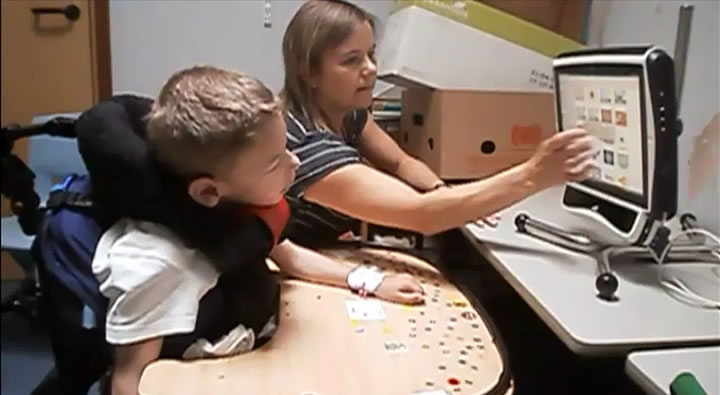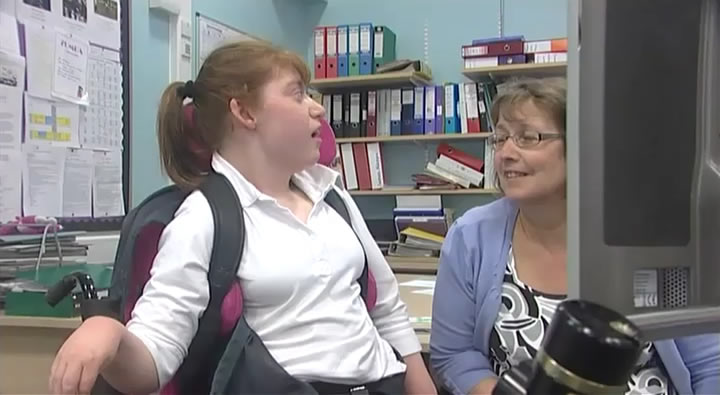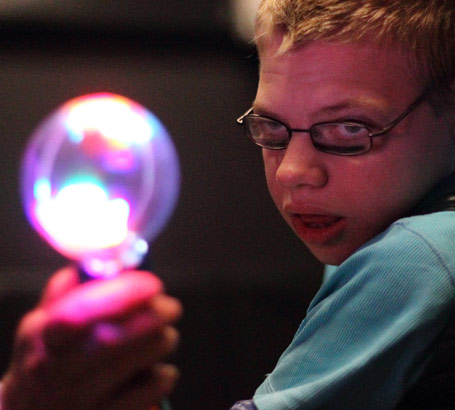
Developments in technology mean that there are more AAC eye pointing devices than ever before. From the more traditional Eye Transfer Frame to bespoke eye tracking systems that enable those with very limited physical movement to communicate.
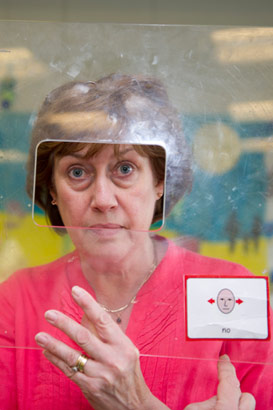
Some people with severe, profound and complex needs can find it difficult to point to a book or chart or to handle communication cards. If they have good control over their eyes, they may be able to use an Etran Frame. This is a sheet of stiff, transparent plastic (Perspex) onto which symbols or words can be stuck with Blu-Tack or Velcro.
The communication partner faces the user and holds the chart up between them. The user gazes at the letter, symbol, or word they want to say. Initially, one symbol or word will be placed at each corner. As the user and communication partner become more skilled, symbols can be added in the middle of each side. The method can be developed further by using colour or number coding systems so that more items can be accessed.
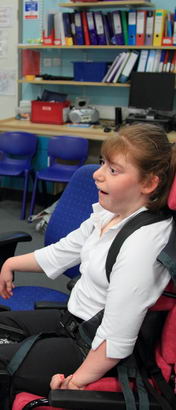
When a user sits in front of the computer screen, a specialised video camera mounted below the screen observes one of the user's eyes. Image processing software in the computer continually analyses the video image of the eye and determines where the user is looking on the screen. Nothing is attached to the user's head or body.
A user can operate a computer programme by looking at rectangular keys that are displayed on the control screen. To 'press' an eyegaze key, the user looks at the key for a specified period of time. The gaze duration required to visually activate a key, typically a fraction of a second, is adjustable. An array of menu keys and exit keys allow the user to navigate the programmes independently.

Eye gaze systems are particularly useful for anyone who has little or no control over movement in the arms or legs. Support of the user's head may be necessary to ensure a steady gaze.
This technology is very expensive but highly effective and motivates young people whose only steady access to a switch is through their gaze.
The following two websites provide further information about this technology.
In the following clip, a young person who is in the early stages of using eye gaze technology has already made great strides in development.
- He already has good eye pointing skills and scanning skills, but little or no meaningful control over his hand or leg movements.
- He is now learning to hold his gaze for longer periods in order to make a choice between a number of icons.
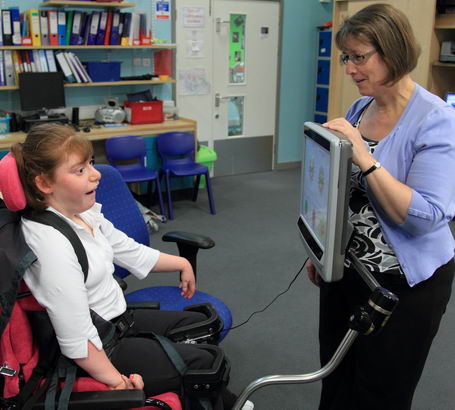
- Unlike when using a communication book or Etran Frame frame, he can now make choices that are independent of adult support.
- In the future, he will take this technology home with him so that his 'voice' stays with him at all times – at school, at home and in his wider local community.
At all times, his family will need to understand how to support this new system.
In the following video, a young person uses an eye tracking system. The progression of acquired skills that enable her to use the system are:
- Choice making through simple switches.
- Scan for using a switch to choose.
- Increased scanning skills.
- Eye pointing.

She has now got to the point where the eye tracking system is mounted on her wheelchair. This enables her to:
- Take her communication device everywhere with her.
- Demonstrate her understanding within the lesson.
- Socialise.
- Become a self-advocate.
